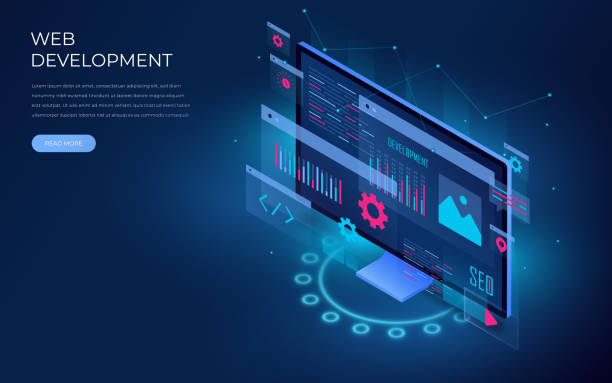Introduction to SEO-Optimized Website Design: Why is This Approach Crucial?
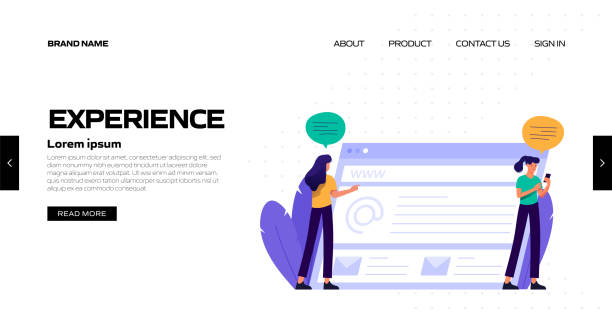
In today’s digital world, having a website is just the first step.
What truly matters is your website being seen by your target audience.
This is where the concept of #SEO_Optimized_Website_Design and #Search_Engine_Optimization becomes crucial.
#SEO (Search Engine Optimization) is the process of optimizing your website for better ranking in Google and other search engine results.
SEO-optimized website design means building a website that is constructed from the outset with search engine rules and algorithms in mind, rather than adding it after the project is complete.
This approach involves a complete integration of technical structure, rich content, and a desirable user experience (UX), all of which help search engines better understand your website and display it to relevant users.
Without search engine optimization, even the best websites might get lost among a multitude of competitors and never reach their audience.
This is a fundamental and vital step for any business aiming for a powerful and sustainable online presence.
In fact, investing in SEO-optimized website design is an investment in your business’s future, leading to increased organic traffic, greater credibility, and ultimately, sales growth.
This not only helps your website to be seen but also teaches search engines that your website offers valuable and relevant content to users.
Therefore, every business owner seeking long-term success in the digital space should prioritize SEO-optimized website design from the very beginning.
This is a complex but entirely manageable process that, by following the correct principles, yields astonishing results.
This section has an explanatory and educational approach.
Is your e-commerce site ready to attract maximum customers and increase sales? Rasaweb transforms your online business with modern and efficient e-commerce website design.
✅ Increased speed and improved SEO
✅ Excellent user experience on mobile and desktop⚡ Get a free consultation for e-commerce website design from Rasaweb!
Keyword Research: The Main Pillar of SEO-Optimized Website Design

One of the most important steps in the process of SEO-optimized website design and its optimization is keyword research.
This specialized stage helps you understand exactly what phrases your target audience uses to search for your services or products in search engines.
Without a proper understanding of users’ needs and search language, all subsequent SEO efforts may be fruitless.
Keyword research goes beyond finding high-volume keywords; it includes analyzing user intent behind each search, reviewing competitor keywords, and finding long-tail keywords that are less competitive and much more targeted.
Various tools such as Google Keyword Planner, Ahrefs, and Semrush can help you gather and analyze valuable data in this regard.
This data includes search volume, competition level, and the relevance of keywords to your content.
Choosing the right keywords allows you to produce content that is not only appealing to users but also understandable and relevant to search engines.
This foundational step is crucial for any successful SEO-optimized website design strategy, as all decisions regarding site structure, content creation, and technical optimization are made based on this initial research.
Comprehensive keyword research paves the way for attracting quality organic traffic and ensures that your efforts are aimed at reaching your real audience.
In fact, this step is a roadmap for how to connect with your audience online, and without it, you might take the wrong path.
This section has a specialized and guiding approach.
On-Page Optimization: Key Principles in SEO-Optimized Website Design
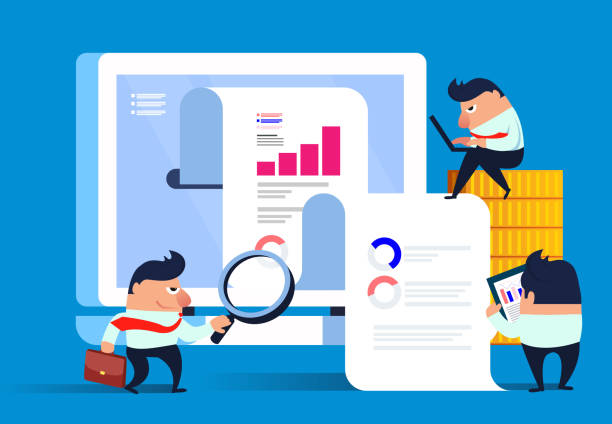
After keyword research, it’s time to implement on-page SEO principles in the SEO-optimized website design process.
This section includes all factors that can be directly controlled and optimized within your website.
One of the most important factors is the correct use of keywords in page titles (Title Tags), meta descriptions (Meta Descriptions), heading tags (H1, H2, H3), and the main text of the content.
Page titles should be engaging and include the main keyword, while meta descriptions should provide an enticing summary of the content that encourages users to click.
Heading tags help search engines understand your content structure and identify relevant keywords.
Content quality is also of high importance; your content must be comprehensive, valuable, and address users’ needs.
Using optimized images with appropriate Alt tags, optimizing URLs for readability and keyword inclusion, and using internal linking to improve page authority flow and user navigation are other vital factors.
A logical and hierarchical website structure also helps search engines better crawl and index your content.
Below is a checklist table for on-page optimization that can assist you in SEO-optimized website design:
| Factor | Description | Importance (1-5) |
|---|---|---|
| Page Title (Title Tag) | Includes main keyword, engaging, and less than 60 characters. | 5 |
| Meta Description | 160-character summary, encourages clicks. | 4 |
| Heading Tags (H1-H6) | Structures content, includes secondary keywords. | 4 |
| Quality Content | Comprehensive, accurate, valuable, and addresses user intent. | 5 |
| Image Optimization (Alt Text) | Describes images for search engines and accessibility. | 3 |
| Internal and External Links | Guides user and search engine to relevant content. | 4 |
| URL Structure | Short, meaningful, and includes keyword. | 3 |
Adhering to these principles during SEO-optimized website design helps search engines better understand your content and, consequently, achieve a better ranking in search results.
This section has an educational and guiding approach.
Technical SEO Factors: Ensuring Sustainable SEO-Optimized Website Design
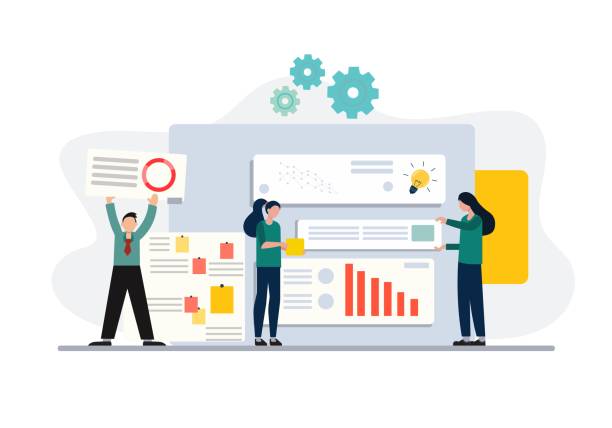
Technical SEO is another aspect that should not be overlooked in SEO-optimized website design.
These factors directly impact search engines’ ability to crawl and index your website.
Page speed is one of the most crucial technical factors that affects both user experience and SEO ranking.
Slow websites lose users, and search engines also prefer them less.
Optimizing images, using caching, compressing files, and utilizing a Content Delivery Network (CDN) can help improve site speed.
Responsiveness and mobile-friendliness are also an absolute necessity today, as most searches are performed via mobile devices.
Google gives higher rankings to websites that provide a good mobile user experience.
Other technical factors include using an XML Sitemap to help search engines discover all your pages, a Robots.txt file to manage search engine bot access to specific parts of the site, and implementing an SSL certificate for website security (HTTPS).
Schema Markup or structured data also helps search engines better understand your content and display it in richer forms (Rich Snippets) in search results.
These technical details may seem complex, but they are vital for an SEO-optimized website design to succeed in the long term.
Ignoring these issues can lead to indexing problems and a decrease in search rankings.
This section has a specialized and explanatory approach.
Does your current e-commerce website generate the expected sales, or does it drive customers away?
Rasaweb is an expert in professional e-commerce website design!
✅ An attractive and user-friendly website aimed at increasing sales
✅ High speed and security for an ideal shopping experience⚡ Get a free online store design consultation with Rasaweb right now!
Valuable Content: The Beating Heart of Every SEO-Optimized Website Design
![]()
Content is the king that reigns over the realm of SEO-optimized website design.
Producing valuable and high-quality content is the most fundamental part of any SEO strategy that helps attract both users and search engines.
Your content should not only include target keywords but also answer users’ questions, solve their problems, and provide comprehensive and accurate information.
Good content is content that engages users and keeps them on your site for a longer period, which in itself is a positive signal for search engines.
Content can be in the form of articles, blog posts, videos, infographics, guides, and Q&A.
Diversity in content format can also help attract different audiences.
Evergreen content, which provides stable and long-lasting information and does not become obsolete over time, is very useful for SEO-optimized website design and achieving stable rankings.
For example, a comprehensive guide on “How to Design an SEO-Optimized Website” can attract traffic for years.
Before producing content, it is necessary to thoroughly understand user intent.
Are they looking for information? Do they want to buy something? Or are they looking for a solution to a specific problem? Answering these questions helps you produce content that precisely meets user needs.
Regularly publishing new and fresh content also signals to search engines that your website is active and relevant.
This section has a guiding and analytical approach that helps you choose the best content strategy for your website.
Off-Page SEO and the Importance of Link Building for SEO-Optimized Website Design

In addition to on-page and technical SEO, off-page SEO also plays a vital role in the success of SEO-optimized website design.
The most important part of off-page SEO is link building.
Links are considered “votes of confidence” from other websites to your site.
The greater the number and quality of inbound links (Backlinks) to your website, the more credible and trustworthy search engines will consider your site, and consequently, they will give it a better ranking.
Of course, the quality of links is much more important than their quantity.
Links coming from reputable websites relevant to your field of activity have much more value than links from low-quality or spam websites.
Link-building strategies include creating shareable content that naturally attracts links, reaching out to other websites and requesting links, guest posting on reputable blogs, and using social media to promote content and attract traffic.
Activity on social media, while not directly impacting SEO rankings, can help increase site visibility and traffic and, indirectly, lead to attracting natural links.
Also, brand mentions without links can also be a positive signal for search engines.
The main goal of off-page SEO is to increase your website’s authority and trustworthiness in the eyes of search engines.
This process is time-consuming and requires continuous and strategic effort, but its results in improving rankings and increasing site traffic will be very significant.
This section has an educational and specialized approach.
User Experience (UX) and Its Role in SEO-Optimized Website Design
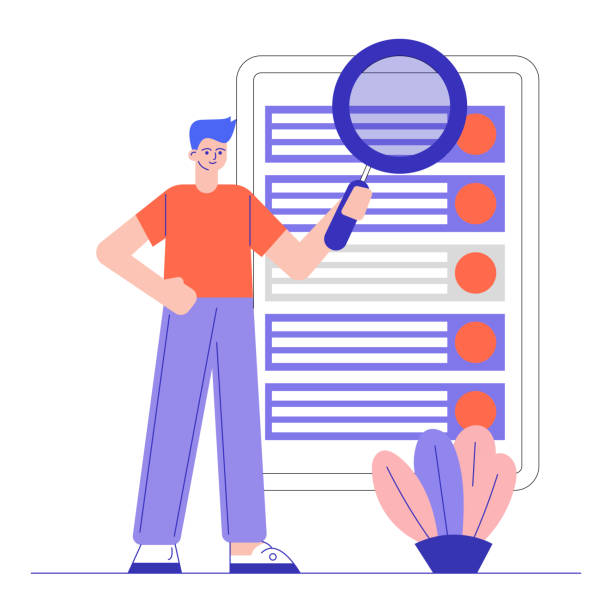
User Experience (UX) may not be a direct SEO ranking factor, but it plays a very important role in the success of an SEO-optimized website design.
Google and other search engines are increasingly focusing on user satisfaction.
A website with a poor user experience, even if technically optimized for SEO, may not achieve good results in the long run.
Factors such as ease of navigation, page load time, attractive visual design, content readability, and compatibility with various devices (mobile and desktop) all influence user experience.
A website where users can easily navigate and find the information they need will have a lower bounce rate and record a longer time on site.
These signals indicate to search engines that your content is valuable and keeps users satisfied.
Since 2021, Google has introduced a set of factors called Core Web Vitals that directly affect page experience and are used as a ranking factor.
These factors include LCP (Largest Contentful Paint) for loading speed, FID (First Input Delay) for interactivity, and CLS (Cumulative Layout Shift) for visual stability.
SEO-optimized website design today must be such that it optimizes these indicators.
Below is a checklist table of important UX factors for SEO:
| UX Factor | Effect on SEO | Importance (1-5) |
|---|---|---|
| Page Load Speed | Reduces bounce rate, increases Core Web Vitals ranking. | 5 |
| Mobile Compatibility (Responsive) | Essential for mobile-first indexing ranking. | 5 |
| Easy and Intuitive Navigation | Increases time on site, reduces bounce rate. | 4 |
| Content Readability | Increases user engagement, reduces early exit. | 4 |
| Attractive Visual Design | Attracts users, creates a sense of trust and credibility. | 3 |
| Site Security (HTTPS) | Direct ranking factor, builds user trust. | 5 |
Overall, the better the user experience you provide, the more users will return to your site, and this will help improve your SEO ranking over time.
This section has an analytical and explanatory approach.
Measuring SEO Success: Essential Tools for SEO-Optimized Website Design

After implementing all strategies related to SEO-optimized website design, the most important next step is to measure and monitor performance.
Without accurate data, you cannot understand which strategies have been successful and which need improvement.
Various tools can help you in this regard.
Google Analytics is one of the most powerful tools that provides comprehensive information about your website traffic, traffic sources, user behavior on the site, conversion rates, and many other metrics.
By analyzing this data, you can identify patterns and make data-driven decisions.
Google Search Console is another essential tool that directly interacts with Google and provides information about your website’s performance in search results, keywords that have led to your site’s visibility, technical crawling and indexing issues, and incoming links.
This tool helps you quickly identify and resolve SEO issues and ensure that your website is accessible to Google.
In addition to these free tools, there are also paid and more advanced tools such as Ahrefs, Semrush, Moz, and Screaming Frog that offer more capabilities in keyword research, competitor analysis, link analysis, and rank tracking.
Key Performance Indicators (KPIs) that should be monitored include organic traffic, keyword rankings, bounce rate, time on site, conversion rate, and the number of inbound links.
Regular monitoring of these metrics helps you ensure the effectiveness of your SEO-optimized website design and adjust your strategies as needed.
This section has a news-like and guiding approach.
Does your current corporate website convert visitors into customers, or does it drive them away? Solve this problem forever with professional corporate website design by Rasaweb!
✅ Create strong credibility and branding
✅ Attract target customers and increase sales
⚡ Get a free consultation right now!
Common Mistakes in SEO-Optimized Website Design and Future Trends

On the path to SEO-optimized website design and its optimization, there are mistakes that can render your efforts fruitless.
One of the most common mistakes is ignoring user intent in content creation; simply stuffing pages with keywords without providing real value to the user can lead to penalties from Google.
Another mistake is slow website loading speed and lack of mobile compatibility, which directly negatively impact user experience and ranking.
Also, neglecting technical SEO, such as indexing issues, inappropriate URL structure, or the absence of an SSL certificate, can prevent your site from being seen.
Using spammy and low-quality links (Black Hat SEO) instead of natural and reputable links is also a big mistake that harms your site’s credibility.
But what trends will shape the future of SEO? One of the most important trends is voice search.
With the increasing use of voice assistants like Siri and Google Assistant, optimizing content to answer conversational and long-tail queries becomes more important.
Artificial intelligence (AI) and machine learning also play a significant role in Google’s algorithms, where high-quality content relevant to user intent becomes increasingly important.
Video content, local SEO for physical businesses, and structured data (Schema Markup) are also important trends to consider.
A successful SEO-optimized website design must always pay attention to these dynamic changes and adapt to them.
This section has a thought-provoking and specialized approach.
Final Tips and Long-Term Strategies for SEO-Optimized Website Design

To achieve sustainable success in the online space, SEO-optimized website design should be considered a continuous and strategic process, not a one-time project.
SEO is a marathon, not a sprint.
Its results may not appear immediately, but with patience and continuous effort, its long-term benefits will be very valuable.
Long-term strategies include regularly producing quality content, updating old content, continuous monitoring and analysis of performance, and adapting to the latest Google algorithm changes.
Building a strong and reputable brand also indirectly helps SEO, as users trust well-known brands more, and search engines give higher rankings to sites with high credibility.
Interacting with users through comments, social media, and contact forms can also help improve SEO, as it indicates site activity and credibility.
Also, paying attention to website accessibility for all users, including people with disabilities, is not only an ethical approach but can also help improve SEO.
Finally, collaborating with SEO specialists and experienced webmasters can help you navigate this complex path.
They can accelerate your SEO-optimized website design process through specialized analysis and implementation of optimal strategies.
SEO is an investment that yields significant returns in the form of organic traffic, leads, and sales.
With a comprehensive and patient approach, your website will gradually improve its position in search results and become a stable source of customers.
This section has an explanatory and guiding approach.
Frequently Asked Questions
| Row | Question | Answer |
|---|---|---|
| 1 | What is an SEO-optimized website? | It is a website designed and developed following Search Engine Optimization (SEO) principles to achieve a higher ranking in search results. |
| 2 | Why is having an SEO-optimized website important? | It increases visibility, attracts organic traffic, boosts conversions, and builds brand credibility, all of which contribute to business growth. |
| 3 | What are the key elements of SEO-optimized website design? | Technical SEO (speed, mobile-friendliness), on-page SEO (keywords, content), user experience (UX), and website security (HTTPS). |
| 4 | How does website speed affect SEO? | Faster sites improve user experience, reduce bounce rates, and are favored by search engines, leading to better rankings. |
| 5 | Is mobile compatibility important for SEO? | Absolutely. Google uses mobile-first indexing, so responsive design for mobile is crucial for ranking. |
| 6 | What role does content play in SEO-optimized website design? | High-quality, relevant, and keyword-optimized content is fundamental for attracting users and signaling relevance to search engines. |
| 7 | What is keyword research and why is it important? | Finding popular search terms people use. This process helps align content with user intent and attracts relevant traffic. |
| 8 | How is User Experience (UX) related to SEO? | Good UX (easy navigation, readability) keeps users on the site longer, reduces bounce rate, and sends positive signals to search engines. |
| 9 | What is a Sitemap and how does it help SEO? | It is a file that lists all pages on a site. It helps search engines crawl and index your site more effectively. |
| 10 | Should I use HTTPS for my website? | Yes, HTTPS provides security and is considered a small ranking factor. It also increases user trust. |
And other services of Rasa Web advertising agency in the field of advertising
Intelligent Sales Automation: A novel service for increasing sales through custom programming.
Intelligent Sales Automation: An effective tool for campaign management by optimizing key pages.
Intelligent Website Development: A dedicated service for digital branding growth based on attractive UI design.
Intelligent Marketing Automation: A combination of creativity and technology to increase click-through rates by designing an attractive user interface.
Intelligent Link Building: An effective tool for user interaction through user experience customization.
And over hundreds of other services in the field of internet advertising, advertising consultation, and organizational solutions
Internet Advertising | Advertising Strategy | Advertorials
Sources
Basic SEO Principles for Beginners
Comprehensive Guide to Technical Website SEO
The Role of Content Marketing in SEO Optimization
The Importance of User Experience in SEO and Ranking
? For your business to soar in the digital world, Rasaweb Afarin Digital Marketing Agency smooths your path to success by providing services such as user-friendly website design, professional SEO, and social media management.
📍 Tehran, Mirdamad Street, next to Bank Markazi, Kazerun Jonoubi Alley, Ramin Alley, No. 6

